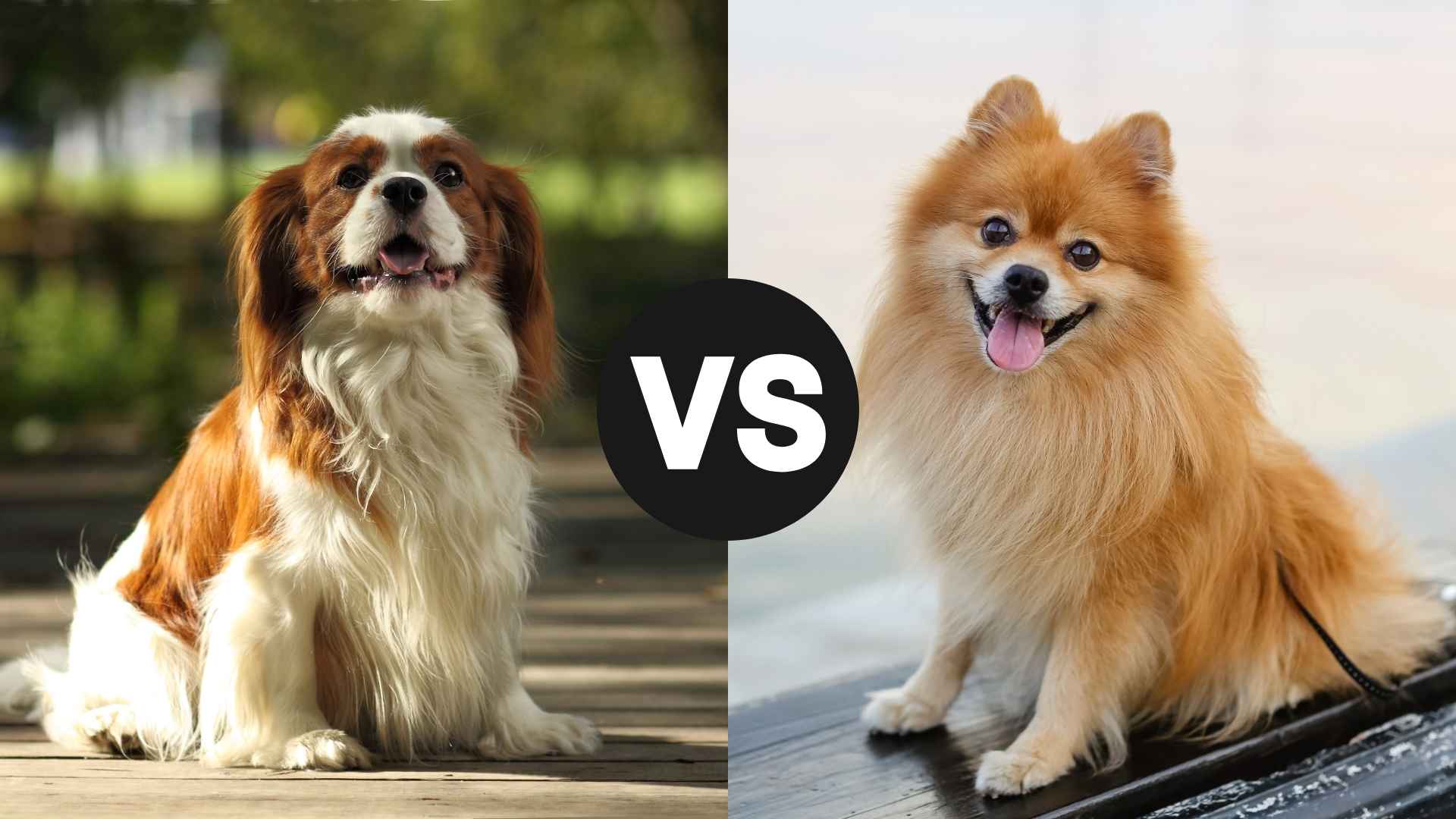When choosing the perfect furry companion, the Cavalier King Charles Spaniel and the Pomeranian often top the list for dog lovers seeking tiny, affectionate, and adorable dog breeds. Both dogs boast charming personalities and eye-catching appearances, but they differ in several key ways that can influence your decision.
From grooming needs and energy levels to trainability and temperament, understanding what sets these two breeds apart can help you find the one that best fits your lifestyle. Whether you’re drawn to the regal, gentle demeanor of the Cavalier or the bold, spirited nature of the Pomeranian, each dog breed brings unique traits to the table.
This blog offers a detailed comparison between the Cavalier King Charles Spaniel and the Pomeranian to help you make an informed choice. Dive in as we explore their differences and similarities in size, care requirements, personality, and more—everything you need to know before welcoming one into your home.
Cavalier King Charles Spaniel vs. Pomeranian
The Cavalier King Charles Spaniel, a toy spaniel dog breed recognized by the American Kennel Club, is renowned for its friendly and sociable nature. Their soft, silky coats come in a variety of stunning colors, such as ruby and blenheim.
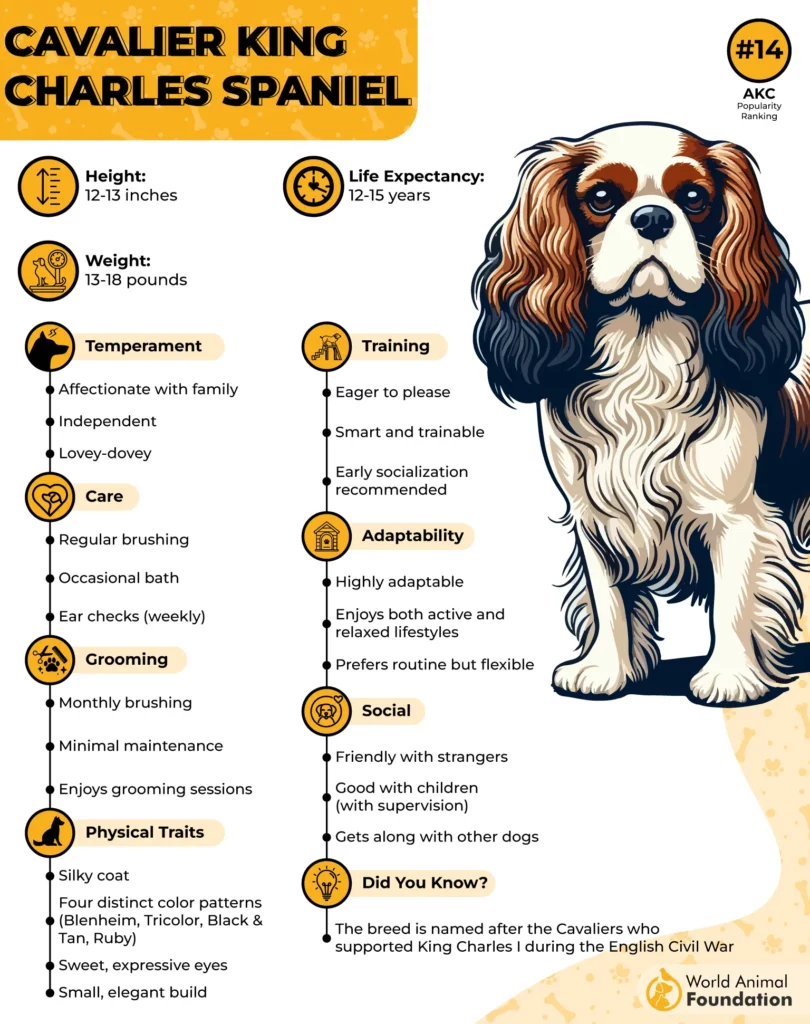
The Cavalier hails from England and has long been associated with nobility, especially during the reign of King Charles II, after whom the dog breed is named. These dogs were often seen lounging in the laps of aristocrats and were bred primarily for companionship.
On the other hand, the Pomeranian, another toy dog recognized by the American Kennel Club, is known for its lively, confident, and bold personality. Although small in size, they act much larger than they are and can sometimes show a bit of a feisty streak.

Pomeranian descends from large Arctic sled dogs and were later miniaturized in the Pomerania region (now part of Poland and Germany). Queen Victoria’s fondness for the breed in the 19th century played a huge role in its rise to popularity, especially in the toy-size we know today.
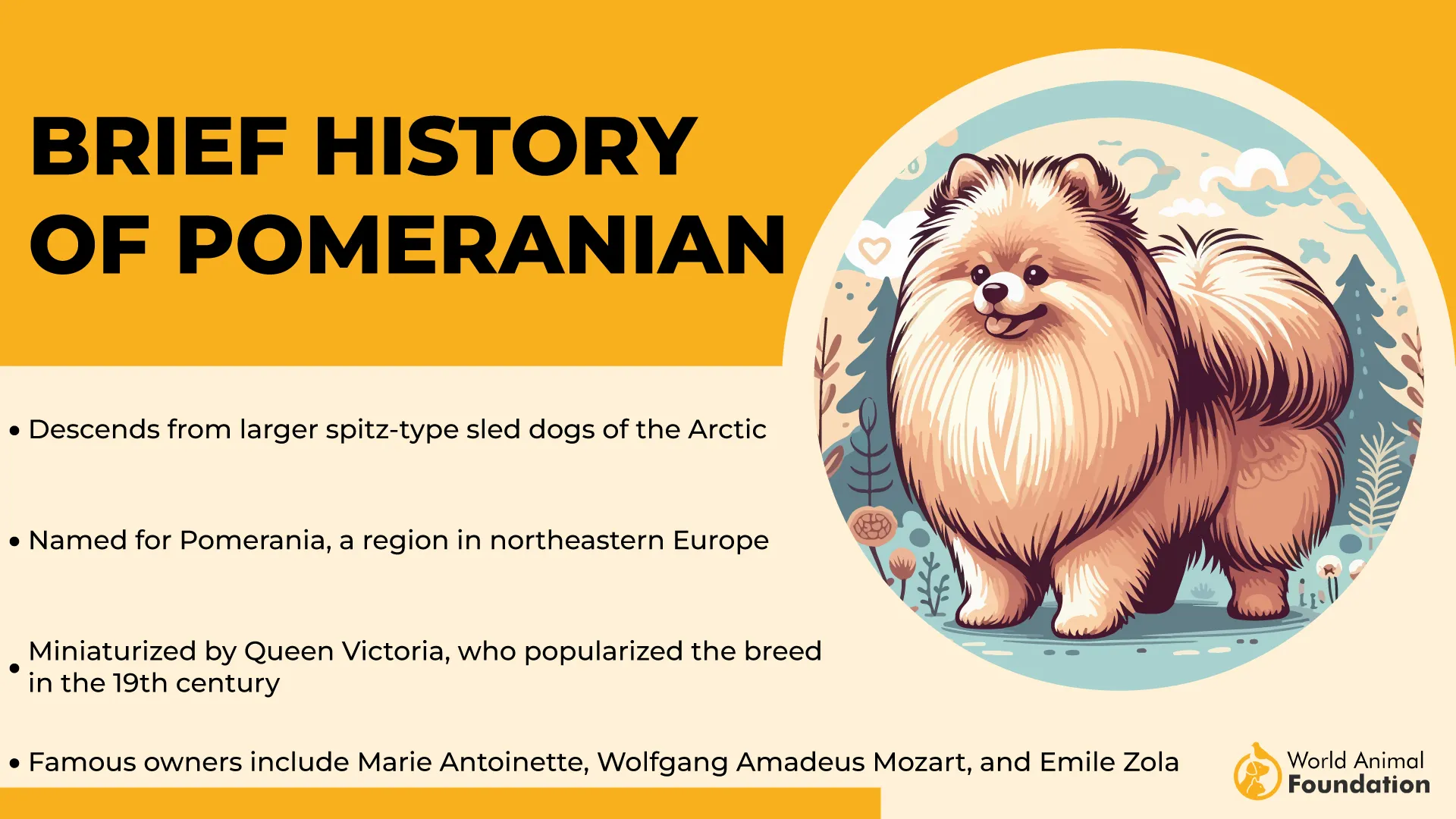
Cavalier King Charles Spaniel vs. Pomeranian: Physical Size and Weight
The Cavalier King Charles Spaniel is slightly larger and more delicately built compared to the Pomeranian. Typically, Cavaliers weigh between 13 to 18 pounds and stand around 12 to 13 inches tall at the shoulder. Their bodies are proportionate, with a graceful frame, expressive, round eyes, and long, silky ears that add to their adorable, aristocratic appearance.

On the other hand, the Pomeranian is one of the smallest dog breeds, weighing just 3 to 7 pounds and standing 6 to 7 inches tall. Despite their tiny size, they have a bold and confident posture. Pomeranians are known for their fluffy double coats and fox-like faces, giving them a vibrant and alert look.
Their compact size makes them ideal for apartment living and easy to carry, but they still carry themselves with surprising energy and attitude.
Cavalier King Charles Spaniel vs. Pomeranian: Behavior and Disposition
When it comes to behavior and disposition, the Cavalier King Charles Spaniel is known for its gentle, friendly, and eager-to-please nature. Cavaliers are intelligent and eager to please, so they quickly learn tricks with patience and positive reinforcement.
Cavaliers thrive in environments where they are lavished with attention and affection, making them ideal for individuals or families seeking a loyal companion who enjoys close bonding and interaction.
Pomeranians, by contrast, are bold, lively, and full of personality. They often act like much bigger dogs trapped in a tiny body, with a confident and sometimes stubborn streak. Pomeranians are highly alert and vocal, making them excellent watchdogs despite their size.
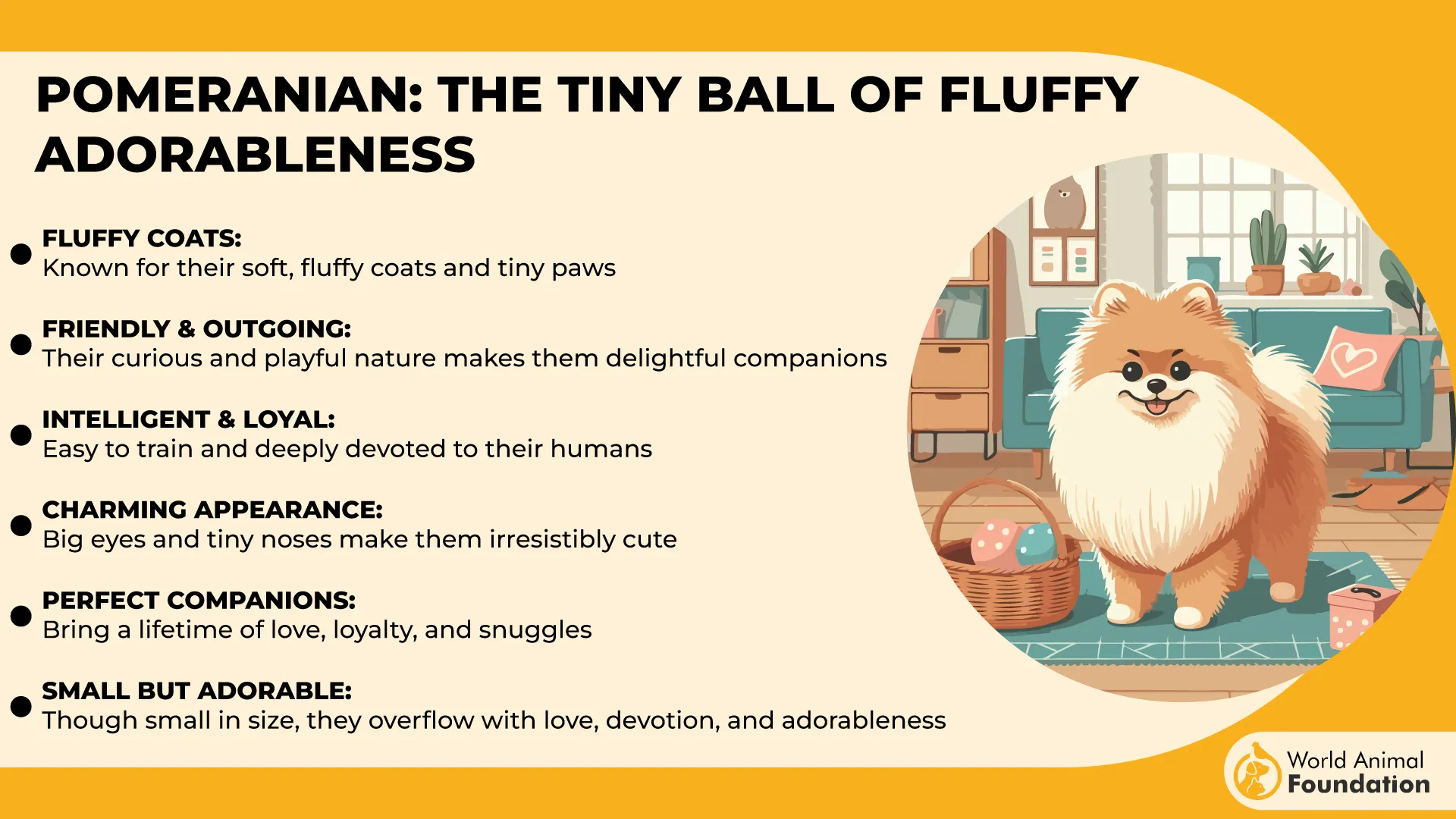
Petplan states Pomeranians are intelligent and curious, but may need consistent training to curb excessive barking or bossy behavior. While they are affectionate with their humans, they can be more selective with strangers and other animals.
Cavalier King Charles Spaniel vs. Pomeranian: Temperament and Disposition
The Cavalier King Charles Spaniel is known for its gentle, affectionate, and calm temperament, making it an ideal companion for owners looking for a loving and loyal pet. Cavaliers are a friendly and sociable dog breed, thriving on human interaction and bonding closely with their families. They get along well with other dogs, other pets, and cats, making them a great choice for homes with multiple animals.
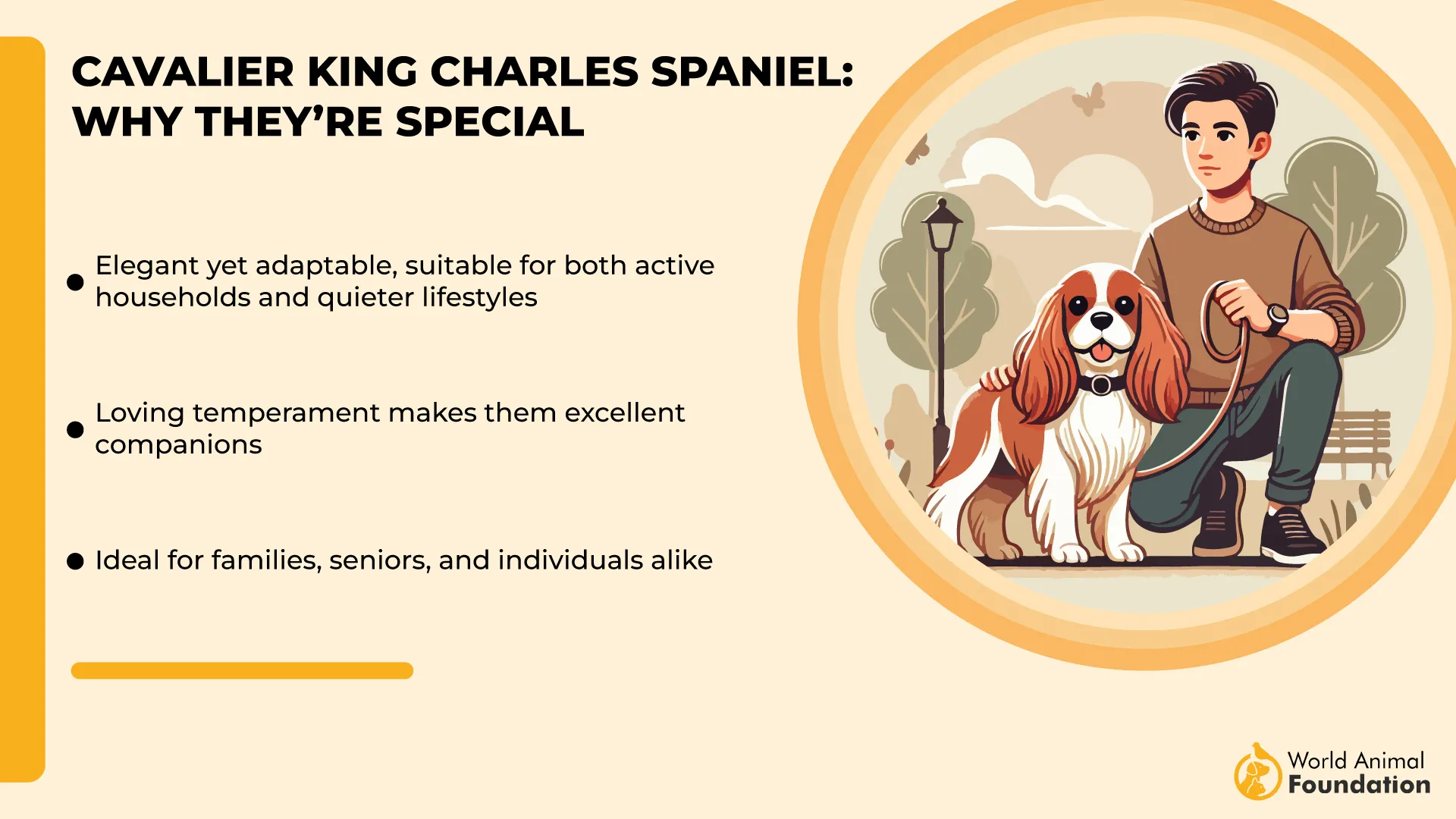
Cavaliers are patient with kids and often enjoy being a part of family activities. Their laid-back disposition makes them an excellent choice for those looking for a group-friendly dog that doesn’t require much in the way of assertiveness. Cavaliers are highly adaptable, though they can become a bit anxious or exhibit worse behavior if left alone for long periods.
The Pomeranian, in contrast, is a spirited, bold, and confident little dog that thrives on attention from its owners. While they may be more independent than Cavaliers, Pomeranians are still affectionate and form strong bonds with their families. They can be a bit more vocal and protective, especially around kids and other dogs, making them excellent watchdogs despite their size.

Pomeranians are energetic and playful, but they may require more supervision to ensure they get along well with kids and cats. Their playful nature often leads to them being a bit more feisty or stubborn, requiring patience from their owners during training.
Despite this, their lively disposition and charming personality make them an entertaining addition to any home, especially in houses where they are given plenty of attention and stimulation.
Cavalier King Charles Spaniel vs. Pomeranian: Energy Level and Playfulness
The Cavalier King Charles Spaniel has a moderate energy level and a playful, easygoing nature. They enjoy daily walks, play sessions, and interactive games, but aren’t overly demanding when it comes to exercise. Cavaliers are just as happy curling up on the couch as they are chasing a ball in the backyard. Their balanced energy makes them well-suited for both active families and more relaxed households.

The Pomeranian, on the other hand, is packed with energy and thrives on play and mental stimulation. Despite their small size, they’re surprisingly active and love to run, explore, and play with toys. Poms often have short bursts of intense energy and enjoy engaging in activities that challenge their intelligence.
They may need more structured playtime and stimulation than Cavaliers to prevent boredom, but their lively nature can be incredibly entertaining and endearing.
Cavalier King Charles Spaniel vs. Pomeranian: Bite Behavior and Traits
The Cavalier King Charles Spaniel is typically gentle and less likely to exhibit aggressive biting behaviors. However, without proper training, they can sometimes nip if they feel scared or anxious. Patience is key when managing and correcting these tendencies.
Early training to teach commands like “no” or “leave it” can help prevent unwanted biting. Cavaliers thrive on positive reinforcement, and consistent effort in training can curb any problematic behavior. Additionally, Cavaliers are sensitive to their environment—stressful situations or lack of socialization can trigger anxiety, potentially leading to more frequent nipping or biting.
On the other hand, Pomeranians are more likely to develop biting behaviors, especially if they feel threatened or overprotected. Their small size and bold personality can sometimes result in biting if they don’t feel secure or if they are not taught proper boundaries.
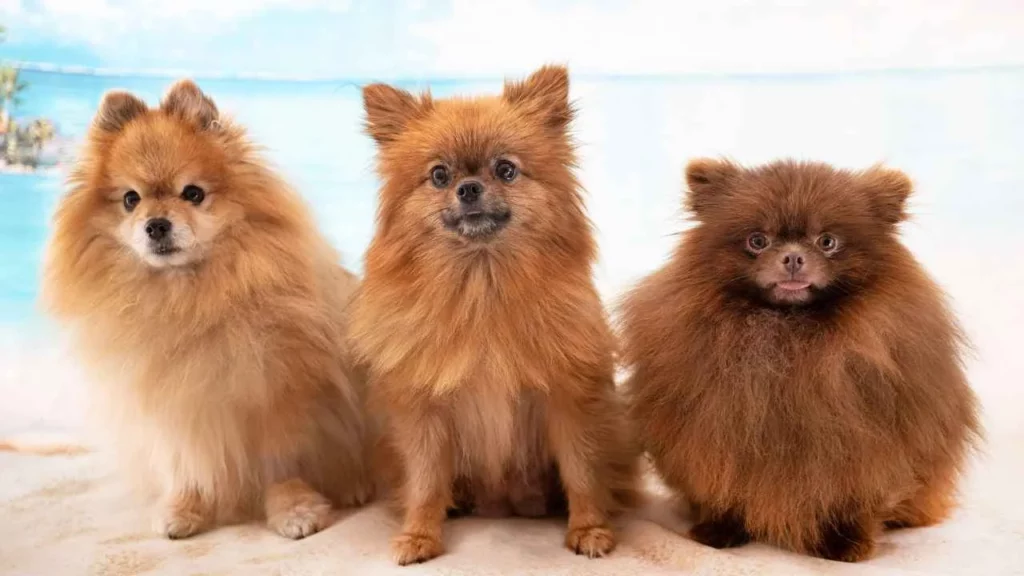
It’s essential to teach Poms basic obedience commands early on, as this can help reduce biting tendencies. Since Pomeranians are more prone to separation anxiety, they might display biting behaviors when left alone. As with Cavaliers, a calm, structured environment and patience during training are crucial to preventing this behavior.
Ensuring consistent effort with obedience training and socialization from a young age can help Pomeranians become well-mannered and reduce biting incidents.
Cavalier King Charles Spaniel vs. Pomeranian: Health and Longevity
PetMD states the Cavalier King Charles Spaniel is prone to certain health issues such as dry eye, patellar luxation, and hip dysplasia. Another condition is mitral valve disease – a heart condition that can lead to heart failure, especially in older dogs.
On average, Cavaliers have a lifespan of about 9 to 14 years, but their overall health can be affected by genetic predispositions, including eye issues and spinal problems. They are also somewhat sensitive, meaning they require regular check-ups to monitor heart health and general well-being.
In contrast, the Pomeranian is a generally healthy breed. Purina states that this breed still faces specific health challenges, such as dental issues, patellar luxation, hypoglycemia, and skin conditions. With proper care, a Pomeranian can live anywhere from 12 to 16 years.

This breed tends to be more resilient in cold weather due to its thick double coat, but they still need to be kept warm during extreme cold to avoid health complications. Both breeds require attention to their diet, exercise, and grooming to maintain a long, healthy life. Regular vet visits and being mindful of breed-specific health risks are essential to ensuring both dogs thrive.
Conclusion
In conclusion, both the Cavalier King Charles Spaniel and the Pomeranian make wonderful companions, but their differences in temperament, care needs, and energy levels can help guide your choice.
The Cavalier, with its calm nature, is ideal for families looking for a laid-back, affectionate lapdog that gets along well with other breeds and pets. They thrive on attention and are particularly fond of bonding with their owners.
On the other hand, the Pomeranian’s bold, spirited personality makes it a great fit for those seeking a lively, confident dog that’s full of energy. While both breeds require proper food and care, Pomeranians may need more structured training due to their independent streak.
Whether you choose a tan-colored Cavalier or a fluffy Pomeranian, both dogs offer loving companionship. Still, your choice will depend on your lifestyle and the type of pet that best fits into your home.


